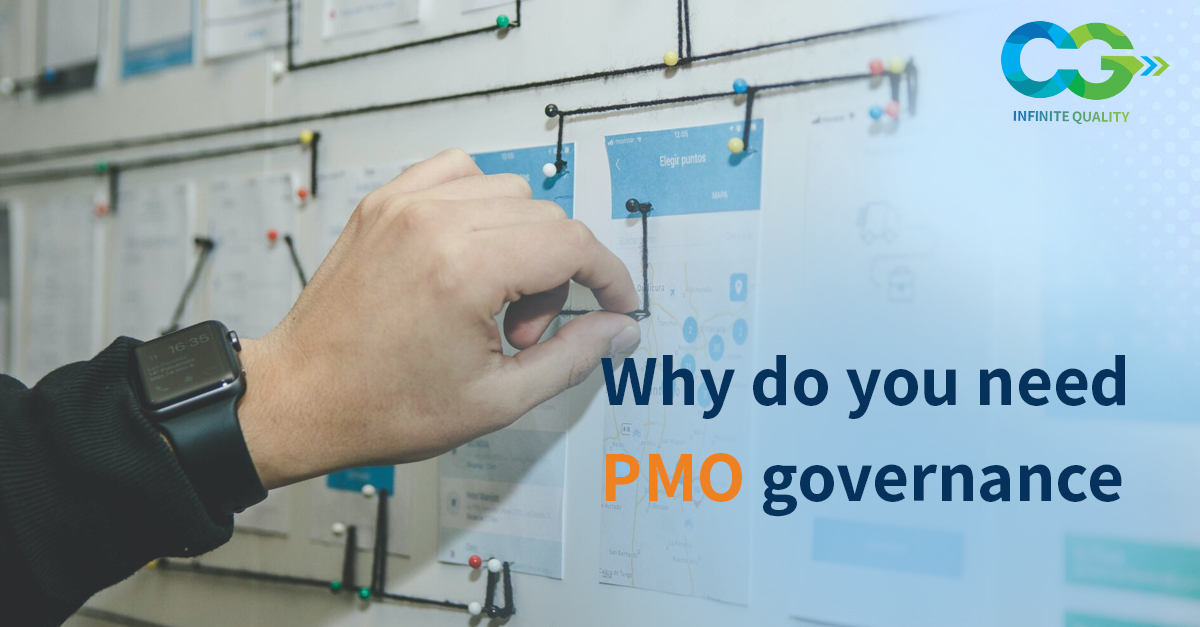
Article Context:
Introduction:
In the dynamic field of project management, achieving success and alignment with organizational goals is crucial. At the core of this endeavor is the Project Management Office (PMO), which plays a central and pivotal role. Essential to its mission is establishing a robust PMO governance framework.
So, what is project management governance? It is the practice of setting and maintaining standards for how projects are managed, monitored, and reported. A set of processes, policies, and procedures are created that guide the execution of projects from start to finish.
PMO governance acts as a blueprint, defining how the Project Management Office functions within the company. It establishes a structured framework of principles, processes, and practices that guide the PMO's activities and ensure they contribute to the broader business goals.
Strong PMO governance is crucial because it creates a structured environment for projects. This ensures projects stay aligned with organizational goals, leading to efficient and effective execution.
What are the Benefits?
The primary benefit of implementing project management governance is improved efficiency in executing projects. This is achieved by providing clear roles and responsibilities as well as establishing standards for communication between stakeholders. It also allows organizations to better track progress against goals by setting performance metrics that can be monitored over time.
Here are some key reasons why PMO governance is important:
Better project focus: With well-defined processes, a robust project selection framework, and strong oversight through governing bodies, leaders are empowered to make data-driven decisions. This ensures they prioritize projects with the greatest potential to boost the company's bottom line.
Clearer expectations and accountability: Well-defined rules ensure everyone understands their roles and responsibilities. This reduces miscommunication and keeps projects on track
Better Scope Management: Documenting and approving a clear scope are crucial for success. Good governance makes sure everyone follows the agreed-upon approach, with appropriate review and sign-off by key stakeholders based on project scale.
Better Change Control: Good governance ensures a clear process for managing changes, empowering project managers, and escalating major changes (scope, budget, deadlines) to the right decision-makers (sponsor, board).
Quality Check points: Stage gates function as checkpoints, ensuring projects meet quality standards before moving to the next phase. Good governance helps project teams demonstrate successful completion of each stage.
Better Risk Management: Strong PMO governance helps organizations proactively manage project risks. This means identifying, assessing, and mitigating potential problems to ensure successful project delivery.
Better project Status/reporting: Project management governance frameworks establish well-defined reporting structures, guaranteeing the consistent and transparent dissemination of project status and performance updates to all stakeholders.
A well-defined IT Project Management Office (PMO) governance structure, underpinned by clearly delineated roles and responsibilities, establishes the foundation for successful IT project execution. This framework fosters a culture of accountability and transparency throughout the entire project lifecycle. By adhering to established industry best practices and leveraging the specialized expertise within the IT PMO, organizations can optimize resource allocation, proactively identify, and mitigate potential risks, and ensure project deliverables demonstrably align with strategic business objectives.
Conclusion:
By implementing a well-defined PMO governance structure, organizations can establish a systematic approach to managing IT projects. This structure provides a clear roadmap for handling the inevitable changes that arise in today's dynamic IT landscape. With a structured approach, organizations can ensure all stakeholders are aligned, communication is clear, and adjustments can be made efficiently. This not only saves money by avoiding rework due to misunderstandings, but also improves overall project success rates by keeping projects on track and meeting goal

AUTHOR:
Siva Kalidoss
Assoc Director, Delivery
